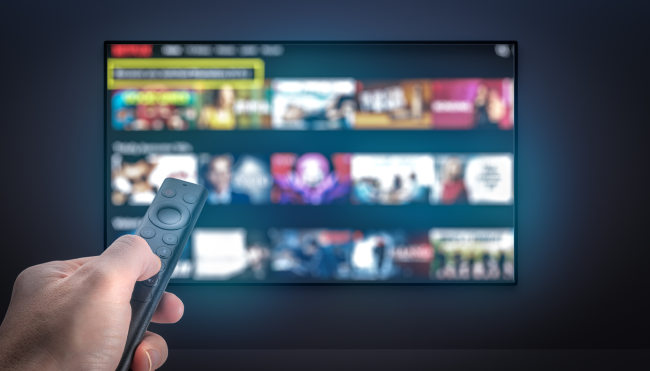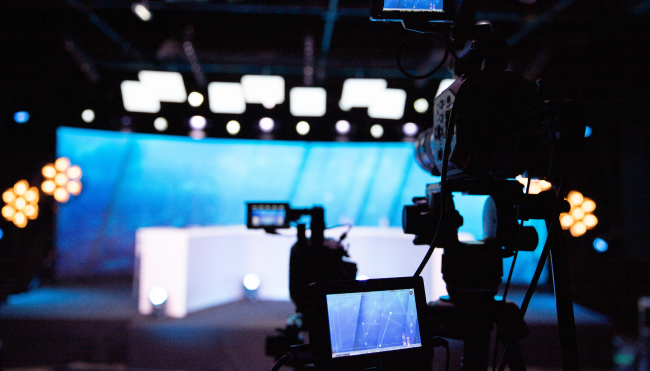- Why Amagi
-
Solutions
Contact UsBusinessWho We Serve
- Offerings
- AI
-
Resources
Contact UsINDUSTRY REPORTSAmagi FAST Report #15: The Power of Live Programming: A Catalyst for Streaming SuccessAugust 21, 2025Read More
-
Company
Contact UsNewsroomAmagi launches AI-powered Smart Scheduler to improve content programmingApril 3, 2025Read More
Blog
Going live in five
By Brian Ring, Senior Director, Product Marketing, Amagi - March 18, 2022
In part 1 of this series, we explained why News brands have so much to gain by leveraging the explosive growth of free linear streaming on connected TVs. Then we outlined three areas for exploration about how to leverage technology and automation to generate enough fresh content to satisfy viewers and distributors.
Let’s deep dive into the first area: Breaking news.
Live and breaking news
The ability to mix live, tape-delayed, pre-recorded – and “feels live” content – into a seamless and cohesive 24x7 channel experience has been a recipe for differentiated success in traditional linear cable and broadcast TV.
But news channels have an additional obligation, which is to be prepared to cover breaking news events that have a major health, safety, economic or social impact on that publisher’s audience.
In a pre-cloud era, “lighting up” a control room was no small feat. And we realize that even today, most master control rooms are built around the baseband facilities and studios that have been foundational to TV for the past few decades. But as we all see first hand, in the pandemic-catalyzed work-from-anywhere environment today, cloud playout and master control and production make it much simpler to ‘go live’ at any time.
On this front, Amagi CLOUDPORT has a major update coming to NABShow this year. Our brand new PLEC Live interface enables operators to easily go live within seconds. PLEC Live means a remote MCR operator now has the tools to produce a newscast - complete with manual ad breaks - from anywhere.
The capability of being able to light up a virtual control room with much less effort might have an impact on when and how newsrooms decide to break into existing programming for updates.
But beyond this critical ability to go live for breaking news, there is a further question to contemplate:
How much live news do channels actually need to create an engaging 24/7 feed?
The answer: Test and learn
There isn’t a single correct answer to this question. (Or at least, I don’t have one.) After all, we’re at the infancy stage of free linear streaming on connected TVs.
In many ways, competition for viewers’ attention will be fiercer than ever, and the need to drive viewership with hours of live talent-driven shows and breaking news coverage will be critical. Some additional investment is required.
But we’re also in a period of uncertainty and change when it comes to TV. We don’t know how news content will evolve and appeal best to tomorrow’s viewers. And maturing CTV advertising markets are making it easier to monetize narrower audiences.
By leveraging content innovation vectors described below, news publishers can leverage real-time metrics of streaming TV - including both concurrent viewership and viewer reach across time - to understand what’s working and what’s not and when, to iterate and build on successes.
Increase content output: Three strategies
We can execute this test and learn programming strategy by exploiting three trends.
First, there’s an explosion of cloud production, AI and creative tools for producers, journalists and editors that have already broadened and deepened the canvas for newsrooms. The movement toward cloud & remote production architectures has been in-progress for a decade. But Covid proved cloud tools and remote production works well – and will only get better.
Second, there’s rising potential for content exchanges, press pool feeds and other forms of shared or licensed content to help fill a range of gaps in the programming wheel. A great example is Stringr, a video marketplace used by Nexstar, CNN, Reuters, the AP and others to help to not only cover breaking events anywhere in the world, but also with regular and customized daily clips, such as weather updates.
Finally, talent. Social media’s creator economy has boosted the available talent pool for news brands globally. One analysis estimated there may be as many as 24,000 YouTube channels with over one million subscribers. We are now on our second generation of kids that know how to edit & create engaging videos with nothing but a mobile phone and a browser. On top of this, they’ve trained today’s audiences to expect more authenticity and humanity in their on-air companions.
Delayed, near-live & graphically updated
There are also a few notable extensions of live content that can help channels fill the content pipe. These involve workflows whereby time-delayed content, recent clips and data-driven graphic feeds can deliver fresh and updated content without being truly live.
Indeed it’s common for some news that may feel live to be slightly delayed. Complexities across time zones in the US, for example, create a need to delay or abbreviate various channels of programming in certain geographies. In other cases, news shows are designed as delayed productions in order to make use of fast-turn editing innovations that improve content quality while lowering cost. In these, multiple takes can be executed and edited in rapid fashion to create content that is fresh without the risk or cost of going live.
Finally, as we fill the 24/7 programming wheel with content that may be re-aired from previous slots, there are further possibilities of refreshing that content utilizing data-driven cloud graphics. This might include lower thirds or perhaps a simple real time ticker at the bottom of the screen. We will dive deeper into these workflows in the next two posts.
Summary
A 24/7 feed will have a mix of Live and on-live content. But having the ability to go live at any time is an important requirement for success in 24/7 news.
Content innovation and investment - from Live to Near-live, from breaking news to tickers and from anchors to creators – is critical for 24/7 FAST channels. But measuring that work in both concurrent and unique viewership over time is a strategic must.
Don’t count out near-live and live-to-VOD programming strategies as a way to enable more “feels live and fresh” content at the same cost, leveraging advanced digital techniques.
Stay tuned with our updates and request our eBook of data on the News landing page at: Amagi.com/News
Part 1. 24/7 News: A TV Format Superpower
Part 2. Breaking News: Going Live in Five
Part 3. Next Gen Cliplisting: Content Automation & the Programming Wheel
Related Blogs
Get started
Increase revenue and reach with our Broadcast & Streaming solutions.
Cloud modernization. Streaming unification. Monetization. Marketplace.
 German
German French
French Spanish
Spanish Korean
Korean Japanese
Japanese Portuguese
Portuguese


